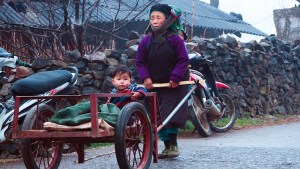Just a few years, maybe even a couple of decades ago, countries like Japan and Spain would be standouts in talk about fertility rates. Only a few nations around the world were cited as places where the rates did not even rise to replacement level.
Little by little, nations began to realize that falling fertility rates were not good news, in spite of decades of warnings that the world’s rising population — reaching 6 billion in 1999 and standing at about 7.8 billion today — threatened the environment and even the future of humanity itself.
Even the People’s Republic of China began to revisit its infamous one-child-per-family policy, realizing that there would be fewer and fewer working people to support an aging population.
Now, experts are beginning to warn of dire consequences if the fertility rate continues to decline — not only in those stand-out countries but around the world.
“Whereas declining birth rates were once seen as a sign of a nation’s ‘progress,’ developed countries now view them through a lens of existential crisis, likely to halt economic transformation and pave the way for increased human suffering and civilizational sclerosis,” writes Joseph Sunde, an associate editor and writer for the Acton Institute.
A grim report in the New York Times over the weekend began: “All over the world, countries are confronting population stagnation and a fertility bust, a dizzying reversal unmatched in recorded history that will make first-birthday parties a rarer sight than funerals, and empty homes a common eyesore. Maternity wards are already shutting down in Italy. Ghost cities are appearing in northeastern China. Universities in South Korea can’t find enough students, and in Germany, hundreds of thousands of properties have been razed, with the land turned into parks.”
Though some countries continue to enjoy population growth, especially in Africa, the Times said, fertility rates are falling nearly everywhere else. “Demographers now predict that by the latter half of the century or possibly earlier, the global population will enter a sustained decline for the first time.”
Two census announcements this month brought the issue into focus. Both China, the world’s most populous nation, and the United States, had their slowest rates of population growth in decades.
Nearly everywhere except in parts of Africa, where families are still having four or five children, “the era of high fertility is ending,” the Times said. “As women have gained more access to education and contraception, and as the anxieties associated with having children continue to intensify, more parents are delaying pregnancy and fewer babies are being born.”
The change may take decades, but once it starts, decline (just like growth) spirals exponentially. With fewer births, fewer girls grow up to have children, and if they have smaller families than their parents did — which is happening in dozens of countries — the drop starts to look like a rock thrown off a cliff.
Some of the examples the newspaper provided of where the demographic crisis is making itself felt include:
- A school in Capracotta, a small town in southern Italy, has turned into a nursing home.
- Hegang, in northeast China, has become a “ghost city” where homes cost so little that people compare them to cabbage.
- In Japan, adult diapers now outsell baby diapers.
- In Sweden, some cities have shifted resources from schools to elder care.
Pope Francis, addressing a conference May 15 on Italy’s looming demographic crisis, called for attention to the issue, and urged a righting of the various factors that would make it more possible to have children.
“We need a policy, an economy, information and culture that courageously promote birth,” he declared.



